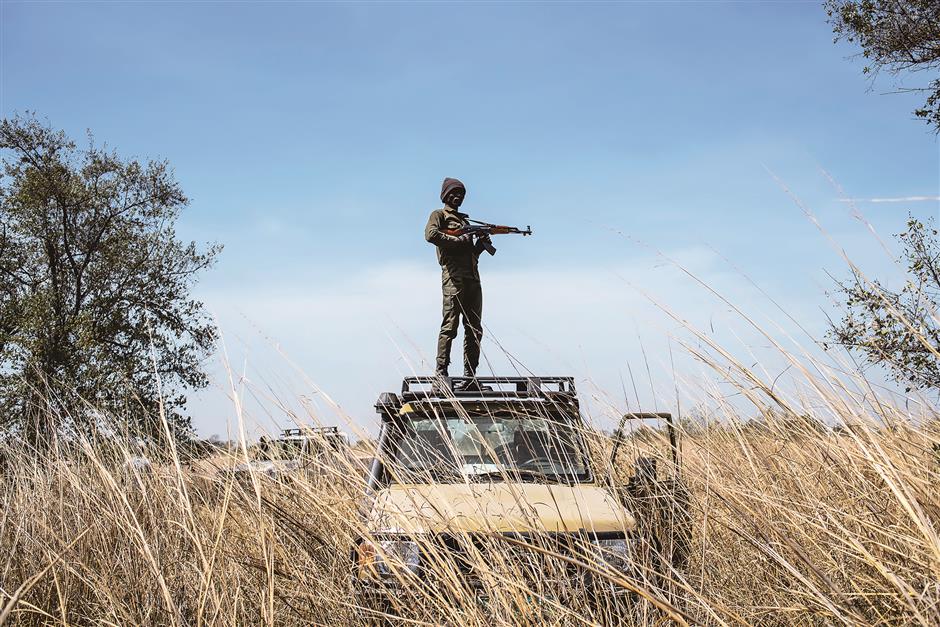Breathing life into Pendjari Park

A herd of elephants cross the road in Pendjari National Park, one of the largest intact ecosystems in West Africa.
Jean-Marc Froment leant against a railing at the lodge in Pendjari National Park in Benin’s far north, and spotted around 40 elephants drinking at a large water hole.
Almost in slow motion, a group of adults chased away two female lions watching nearby and stood in the way of other predators so their young could quench their thirst in safety.
“See how they’re arriving calmly? That was unthinkable a couple of months ago. They were still very nervous,” said Froment, the head of conservation for African Parks.
Froment, who is originally from Belgium, moved to Benin four months ago and has spent his working life across Africa, helping countries to protect their national parks, which have often been destroyed by decades of conflict.
Benin isn’t at war. But Pendjari, situated more than 12 hours by road from the economic capital Cotonou on the Atlantic coast, has suffered years of political and economic neglect.
The 4,700-square-kilometer park is one of three straddling the borders of northern Benin and neighboring Burkina Faso and Niger. It’s one of the last sanctuaries of untamed wildlife in West Africa, whose flora and fauna have been forgotten since French colonial days.
Pendjari has suffered poaching of elephants for ivory, illegal hunting and tree felling.
Jose Pliya, the director of Benin’s National Agency for the Promotion of Heritage and Tourism Development (ANPT), said the park was “dying a slow death.” The government set up the ANPT to speed up the implementation of new projects, with President Patrice Talon having made tourism a key priority of his five-year tenure.
“The head of state often compares Benin’s rich heritage and culture to untapped oil deposits,” said Pliya.
Only about 200,000 visitors came to Benin in 2014-15 but Talon has an ambitious aim to attract 1 million between now and 2021 and create 100,000 jobs in the next decade.

A ranger stands guard on top of a vehicle during an elephant collaring exercise at Pendjari National Park, where a monitoring system is being implemented on elephants, lions, leopards and cheetahs to understand the animals’ movements.
To bring a park of such a size back to life, Benin has needed to find investors willing to put in US$26 million over 10 years. The government has committed itself to US$6 million.
In Rwanda, gorilla conservation programmes have made tourism a leading money-spinner, bringing in US$400 million in revenue in 2016. Benin wants to follow suit.
“The increase in wildlife will be our sign of success,” said Froment, whose non-profit employer has been given the task of managing Pendjari.
There are currently only estimates of the number of lions, buffalo and hippos but a census is being undertaken, using a microlight plane flying at low altitude.
“There was no way of flying in the park before. But it’s a must. From the sky you can see carcasses, forest fires, poachers,” said pilot Stephane Carre.
The habits and movements of the wild animals also need to be understood.
Collars with satellite tracking devices have been fitted onto a number of elephants and lions. That will help determine where to deploy the 60 or so new rangers who have been trained to protect the animals, and also where to build lodges and new airstrips for tourists.
Whether the park will aim at travellers from the luxury market or a younger, backpacker clientele is unclear at the moment, said park director James Terjanian.
“It’s all to do, that’s what’s exciting about it,” he said.















